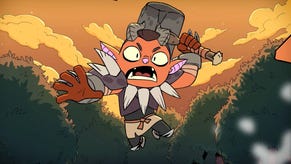Halo 4 Interview: I, Promethean
Halo 4 is shaping up rather nicely indeed. VG247's Dave Cook speaks with 343 Industries' Frank O'Connor to find out more about its dark new world.
343 Industries is an unproven quantity in the games industry. Halo 4 will be its first game, and series fans will be watching when it launches November 6th to see if the studio has made good, and kept the spirit of Bungie's franchise alive and well.
We're inclined to believe in the studio after playing two full campaign missions and a drizzle of multiplayer. You can read all about it in our Halo 4 hands-on impression feature here.
After blasting our way through Halo 4's new Promethean enemies and getting acquainted with 343's new plot and weapon load-out, we wanted to know more.
So VG247 sat down with franchise development director Frank O'Connor to learn more about where this new Halo trilogy is heading, and how it feels to have millions of fans watching them like hawks.
VG247: We died a lot during our campaign hands-on, as did a lot of other journalists today. Would you say this is a harder Halo experience?
Frank O' Connor: It's actually probably not harder, but more that you're encountering a lot of new stuff, so your muscle memory hasn't adapted to understanding the new enemies.
But I will say that it continues to be challenging, because I think the Prometheans are more unpredictable than the Covenant. Whenever you go into a Covenant encounter it's predictable, because you say, 'OK I'll take out the Elites first, then the Grunts or the Jackal snipers.'
Although, the way that the Prometheans adapt to your behaviour is kind of unforgiving. They're clever and the AI charges you in these new and interesting ways that you won't be expecting.
And they know you're coming, so it's not - on a pixel-basis - harder, but it's much more unpredictable and surprising, which makes it more challenging.
Where did the final design behaviour of the Prometheans come from? Was it an iterative process?
The fictional part of it was easy as we already knew about the Prometheans, they're built into the canon thanks to the terminals in Halo 3, and we looked to the novels to sort of define them.
The gaming part of it - as in, how they behave - was the challenging part. It's more challenging in some ways than getting the aesthetic design right, because these things could be cubes and still behave in the same way, and still be fun to play against.
"Halo’s cool, it doesn’t fight you and say, ‘I’m just going to make this hard’. Instead it says, ‘I want you to get good at this.’"
We wanted to be philosophically different by changing them, and making them much more strategic than the Covenant. They're more aggressive and they hit you on a beat-by-beat basis, as their attacks feel a little more planned, plus they use defence as an offence.
That's thanks to the Watchers, because you see them shielding their team mates, respawning each other, resurrecting each other, and it just makes them really interesting to fight.
And that's really important because you'll be fighting these enemies throughout the entire game, and so you have to continually be surprised. Halo's cool, it doesn't fight you and say, 'I'm just going to make this hard'.
Instead it says, 'I want you to get good at this', so when you do walk through an encounter lazily and easily, you still feel good about it because it was your skill and adaptive reflex that got you through it.
Is that something you felt was lacking in the previous Halo games?
Well no, because I got that with previous Halo games. Like when a Covenant dropship flies in and Grunts start jumping out the back, I love picking them off before they hit the ground.
The game lets you do that. I mean, we could make then indestructible as they fall out - and we did in some sections to create certain situations - but we want the game to reward you for being good at it, and to feel powerful. That's what he difficulty levels are for.
We only played two levels today but we're already intrigued by the plot. How deep do you go into the Forerunner's history?
There's a bunch of ways that we tell the story, and it's very complete if you haven't read any of the books or played any of the previous games. Everything you need to know about the characters, backstory and Forerunner civilization is built into the game.
Something happens after the mission you played that keeps with our story-telling. I won't ruin it for you but we also have terminals that go into the very surprising history of the Forerunner relationship with humans, and there's some stuff that happens in the terminals that will - certainly for the hardcore fans - blow their minds.
We tried to make the story more approachable and less baroque and obscure, so it's all going to be right in your face, and hopefully people will enjoy that. But yeah, it's all part of the story.
Was this the story that you always wanted to tell, or did you consider other routes for Chief at the start?
Well, I've always wanted to know more about the Forerunners myself, because that wasn't actually fleshed out, and a lot of it was just mystery for the sake of mystery. Back in the day when I worked at Bungie, we'd talk about it amongst ourselves, and people had different ideas about them.
We spoke about what it would look like if we actually fleshed that story out, and then at 343 I got the privilege of actually getting to do just that. I feel the most important thing about that is the Halo universe's mystery - like, how to reveal those details without getting rid of the mystery around it?
You discover the answers to these mysteries but then these new questions appear, and let me just say - things aren't always as they seem, and you should expect new surprises.

Remember this. This thing is very important.
As this is the first game in a new trilogy, how far ahead do you need to plan this new story to make sure it all fits and stays coherent?
Very far ahead. We had to be careful not to let the story railroad the game in undesirable places, so we talk about that whenever artists or designers come up with things that don't fit into where our story's going.
But yeah, we've thought it out fairly far, but not in tremendous detail, because again, we have to have room to adapt and expand. One of the hardest challenges on this game was all this supporting fiction we're using as the game's history - they're then creating a base that we then pull from.
The story already seems to be going deeper into Chief and particularly Cortana. She's now glitching out and becoming volatile, can you tell us more about that?
There's two main layers to the story: there's this great new enemy, a brilliant new antagonist, as well as the strange mystery that makes up a big part of the story. Then there's this personal side between Chief and Cortana.
It's about him trying to solve the issue that she's having, which is that she's terminally ill. She's eight years in to a seven-year lifespan, and she's starting to endure rampancy. She's got some advantages that other AI doesn't have.
She was cloned from a human brain, she's had more exposure and more understanding of Forerunner technology than the other AI, so she's able to hold it together, and she has been holding it together while Chief has been in cryo sleep.
"Four years ago in Halo 3, Cortana was responsible for Chief, and now he is responsible for her. It’s sort of an inversion of those roles."
Four years ago in Halo 3, Cortana was responsible for Chief, and now he is responsible for her. It's sort of an inversion of those roles that makes for a strong piece of story-telling where we redefine the Master Chief.
It's not like he's going to start talking a lot more, but we do want people to have some resonant feelings for that relationship and who the Chief is, but without yanking him out of the helmet, and constantly reminding them that they're not Master Chief.
So far the campaign has been awesome, but a lot of players think about multiplayer when they look to the Halo franchise. How did you go about making sure Halo 4's multiplayer was worthy of the series?
Well there's a broad spectrum of opinions on the matter. There's some people who just want us to make the first Halo over and over again, but that's unrealistic. That just doesn't work.
But there's something about the original balance that highlights how Halo multiplayer works. Everything from the way your reticule moves, the targets and the speed that you run at - there are elements of those that have to stay the same.
It's like a sport with rules. The sport has to feel right - football has to feel like football, baseball has to feel like baseball and so on. So that part of it we had to leave completely intact, but we did want to do something meaningful with the player progression system.
Can you tell us a little bit more about players will advance through multiplayer ranks?
Everyone likes new armour and ways to make their character stand out, and that's an important part about how you feel about yourself in the game. But we wanted to do something interesting with progression.
Obviously you can unlock new weapons and abilities that you can put into your load-outs in some modes We wanted to create a player-progression model where the philosophy wasn't that you're moving towards some magical super-weapon.
Instead, you wanted to maintain a balance and the predictability that Halo's combat has always had, and so when you do unlock these new weapons and abilities, you can use them to tune your character to the style you want to play in.
You'll see that even in the way that things are named. For example there's a tactical package that makes you a good driver, because it'll let your vehicle take that little bit more damage. It's not a lot and you won't notice it much on the battlefield while attacking someone who has it.
”We wanted to create a player-progression model where the philosophy wasn’t that you’re moving towards some magical super-weapon.”
But they will benefit from that slight tuning so that when two players come around a corner and they've unlocked everything - there's not going to be a case where somebody whips out a rocket and wins because of that.
They're more likely to pull out something like a DMR or Battle Rifle, and it's still going to be about that skill and the balance of combat, but people will still have specific things that they like.
People do it in the game already in a way. If you think about a player who likes using the Plasma Pistol - nobody's fighting over the Plasma Pistol in multiplayer, so it's just slightly inconvenient to go get it because you happen to like using it.
Power weapons are a different thing and that's why we don't have them in load-outs. They are placed on the map, but again it's not about wasting someone with a rocket launcher. It's about handling, feeling, skill and subtle changes.
Halo 4 launches worldwide on November 6th.






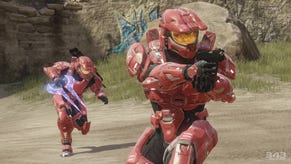

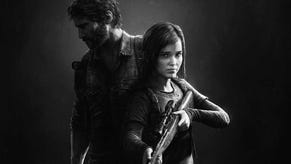




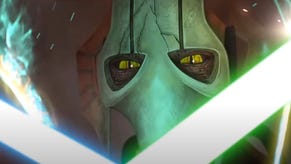
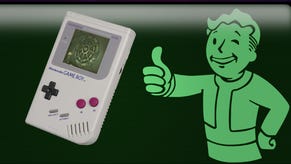
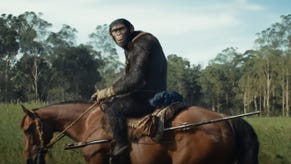
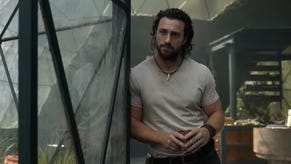
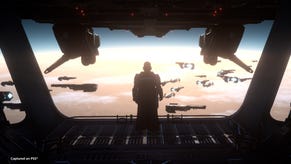
.png?width=291&height=164&fit=crop&quality=80&format=jpg&auto=webp)
